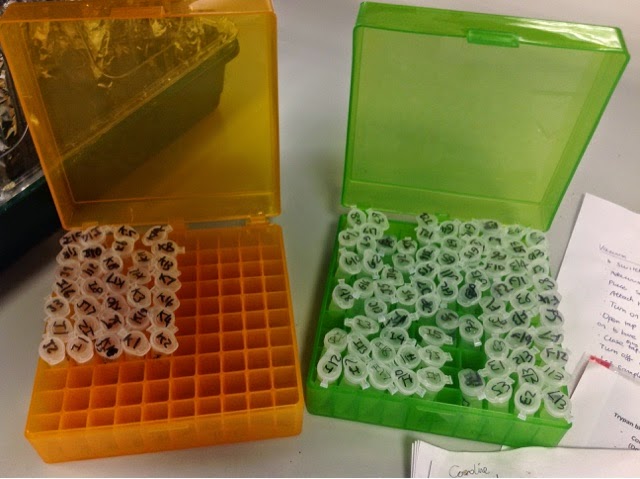It just goes to show how much of research is pure guesswork. After my first attempt was unsuccessful, my supervisor and I decided that the conditions in the climate chamber had been too hot, practically cooking both the tobacco and the Striga parasites. Convinced that this was the main reason for failure, I was buoyened with optimism as I prepared Round Two, in the cooler controlled environment cabinet. But clearly the heat wasn't the issue after all. My supervisor now believes that the cultivar of tobacco we have - which we thought was a Striga susceptible 'Samsun' variety- isn't actually Samsun after all, but a resistant genotype (which wouldn't be too surprising as Striga gesnerioides normally parasitises cowpea, a different host completely). In order to check this, I am preparing some tobacco seedlings to grow in rhizotrons ( root observation chambers) where I can infect them with Striga myself by painting on the seeds with a paintbrush. If the parasite attaches , then we will know that the tobacco can be infected after all. If not...then it will be back to the drawing board.
It is a great worry as my seed stock is getting lower and lower and this makes me hesitate to set up more experiments. If ONLY I had a whole vial of seed, enough to see me to the end of my PhD, then I wouldn't have to worry and could just plough ahead with as many experiments as I could manage... Having said that though, even if I did have gazillions of Striga seed, I would doubtlessly find something else to worry about in my research!
PS I have also been blogging for the University of Sheffield's Science in Policy Group. To read my summary of our latest seminar - Dr Aaron Thierry on why climate scientists should advocate for action against climate change - click here! http://www.sheffieldscienceinpolicy.com/blog







